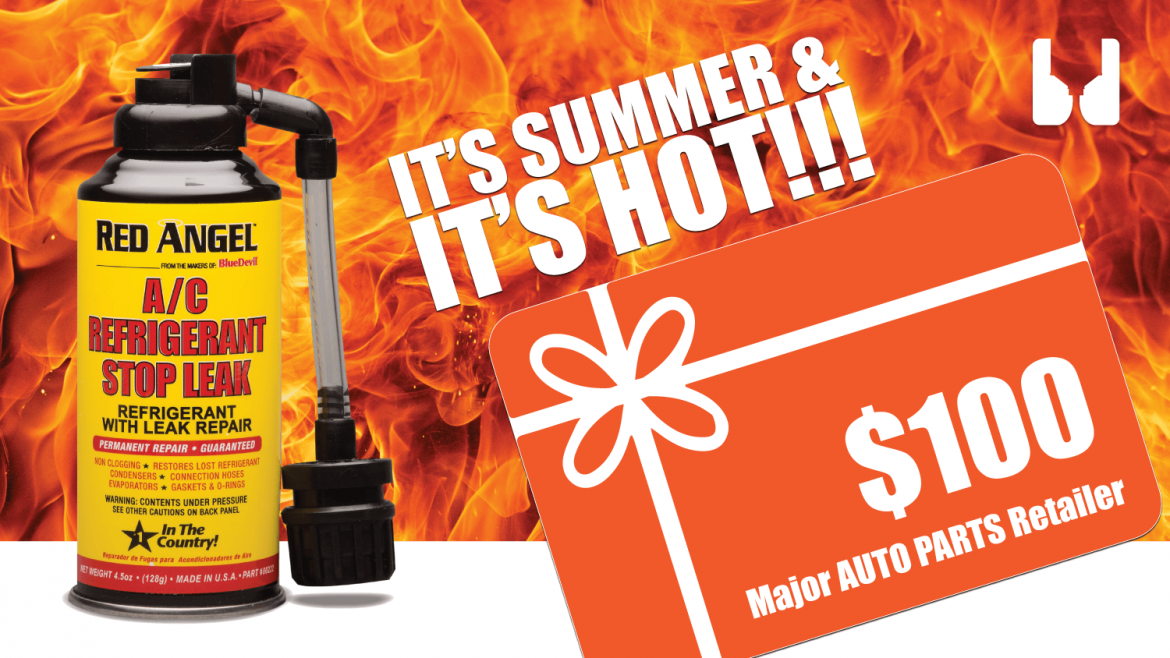If you’re like most Americans, you drive your car every day and couldn’t really get along without one. It gets you to work, to the grocery store, around town and to visit family. Your car is essential to your lifestyle. That means car repair and maintenance are also essential to your lifestyle.
If you want your vehicle to work reliably and last a long time, you must maintain its proper functioning and follow all the guidelines for auto repair and maintenance. You know what that means: change the oil regularly; check the fluids, hoses and belts; keep your tires inflated and in good tread; pay attention to any signs of distress; and bring it in for regular maintenance and checkups.
Even those who follow these guidelines can get into trouble because they believe in myths, old wisdom and just plain bad advice about their car or truck.
Here are 10 common myths heard all the time about automobiles and auto repair, and the truths that you really should know about keeping your car or truck reliably on the road.
Myth #1: Change Your Oil Every 3,000 Miles
Once upon a time, when automobiles had distributor caps and were unlocked by inserting a key in the door and turning it, this was a good rule of thumb. We brought our cars to the local car repair shop and had them change the oil. Or we changed the oil ourselves. Once oil and lube stations began popping up, it made sense for them to encourage customers to return every 3,000 miles, even after that was no longer necessary.
A survey by AAA found that nearly half of Americans still believe they need to change their oil every 3,000 miles. In fact, cars manufactured after 2005 or so don’t require an oil change that often. Manufacturers now recommend changing the oil every 5,000-7,5000 miles.
Is it because cars run cooler or use less oil? Actually, it’s the oil that has improved. Motor oil now contains additives that lubricate and extend the oil’s useful life. Pricier synthetic oil can last even longer—up to twice as long.
It makes sense to follow the manufacturer’s recommendation listed in the owner’s manual. Changing your oil more often than at recommended intervals isn’t better for your car, it’s just a waste of money.
Myth #2: Change Your Tires When the Tread Wears Down to 2/32nds of an Inch
It is true that tires can no longer grip the road once their tread wears down below 2/32nds of an inch. But research has demonstrated that tires begin losing their gripping ability long before that. In fact, tire performance in wet weather deteriorates significantly once the tread wears beyond 4/32nds of an inch.
Do yourself a favor and begin tire shopping even before the tread reaches 4/32nds. By the time you find the best deal, it will be time to replace the offending tire. Speaking of replacing tires…
Myth #3: Replace All Four Tires Together
This is actually true—if you drive an all-wheel-drive car. In that case, the tires must all be replaced simultaneously. But if you drive a rear-wheel or front-wheel drive car, it’s simply not necessary. You can replace both front tires or both rear tires together, or even a single tire.
However, using one brand-new tire when the other tires are quite worn will make them wear unevenly and shorten the life of all the tires. So you shouldn’t drive with one brand-new tire and an opposite tire that is well-worn. Moreover, tires should be matched in size, tread pattern and speed rating.
Tire ratings look like this: P205/60R16 82S. P means it’s a passenger car, the first number (205) is the width of the tire, the next number (60) is the ratio of height to width, R signifies it’s a radial tire, the number following it (16) is the wheel diameter, the last number (82) is the load index and the last letter is the speed rating. This information on your new tire should match the existing ones.
But adding a single new tire to a set that remains in good shape will not alter the way the car runs significantly. Got a flat? Go ahead and replace that one tire.
Myth #4: Fill Your Tires to the Pressure on the Sidewall
One more myth about tires: The pressure listed on the side of the tire is the maximum the tire can bear, but it is not the optimal tire pressure. The recommended tire pressure is listed in the owner’s manual, and it is lower.
Filling to the maximum makes for a rough ride and increases wear on the tires. In addition, Consumer Reports testing found that filling the tires to 10 psi lower than the maximum increased gas mileage by a full mile per gallon.
Myth #5: Car Batteries Last a Long Time
The life of a car battery depends significantly on the climate and the driver. Some are gentler on batteries than others. Generally speaking, a car battery lasts just three to five years. If your battery is three years old, get it tested next time the vehicle is in the shop.
Myth #6: Rolling Down the Windows is Better for Gas Mileage Than A/C
This idea grew out of the truth that running a vehicle with the air-conditioning on increases the load and consumes fuel. But it neglects the detrimental effect of rolling down the windows on a car’s aerodynamics. In fact, the impact of either one is fairly negligible, so feel free to crank up the A/C.
Myth #7: Warm up the Car Before Driving
This is another automobile myth rooted in days of yore when vehicles had carburetors and needed to warm up. With electronic fuel injection, it just isn’t necessary, even on frigid winter days. Excessive idling reduces fuel efficiency and pollutes the air, so turn on the engine when you’re ready to go and drive away.
Myth #8: Using Premium Gas Improves Performance
This is totally true—if your car requires premium gas. It is damaging to use regular gas in engines designed to run on higher-octane fuel. But the reverse is true too. If your car is designed for regular gas—87 octane—using premium will cost more and could promote carbon buildup, lowering gas mileage. Bottom line: Use the fuel recommended by the manufacturer.
Myth #9: It’s Okay to Ignore Problems for Awhile
Most people know they shouldn’t ignore the oil leaking onto the driveway, or the illuminated dashboard temperature indicator, or the rattling sound beneath the driver, but they do anyway.
This is a big mistake. It could be a costly one too.
Consider this issue: The radiator constantly needs to be topped off and the temperature gauge indicates an elevated engine temperature. Maybe there’s white smoke coming out of the exhaust. You could drive like this for a while, refilling the radiator with coolant and watching the needle on the gauge fall back to normal before rising again over time.
This temporarily solves the symptom, but not the underlying problem. These are telltale signs of a blown head gasket. If allowed to deteriorate, a complete breach in the head gasket can cause catastrophic damage to the engine.
A head gasket keeps the combustion chamber of the engine separate from the mechanical parts of the car. It keeps the coolant, fuel and motor oil separate. When it begins to fail, coolant leaks into the engine where it gets burned and ultimately blown out the tailpipe with the rest of the exhaust. It mixes with oil and fouls the engine. Losing coolant allows the engine to overheat.
Ignoring this problem can lead to failure of multiple engine systems. If the problem is indeed a blown head gasket, the cost for replacement can approach $2,000 for the average car. Most of the cost is labor because accessing the head gasket requires a near complete disassembly of the parts under the hood.
If the hard repair isn’t an option, it is possible to save the head gasket and avoid costly repairs sealing the leak in the gasket with BlueDevil Pour N Go Head Gasket Sealer. However, the sealant only works when it is used, which requires addressing the issue.
Myth #10: If a Vehicle Isn’t Taken to the Dealer, the Warranty Is Invalidated
A survey by AAA found a third of Americans are afraid to bring their cars to repair shops for fear of invalidating the warranty. Dealers themselves may love this myth, but that doesn’t make it true. Regular maintenance, done correctly at the facility of your choice, keeps the vehicle functioning properly, saves money, and has no effect on the warranty.
Misinformation is easy to disseminate these days, so double-check any information you hear with a reputable source. You just might discover that what you’ve heard is a myth, and when it comes to car repair and maintenance, it could be a costly one.
BlueDevil Products can be found at AutoZone, Advance Auto Parts, O’Reilly Auto Parts, NAPA, Parts Authority, Auto Value, Bumper to Bumper and other major auto parts retailers.
BlueDevil Products can be found on Amazon.com or at AutoZone, Advance Auto Parts, O’Reilly Auto Parts, NAPA, and other major auto parts retailers.
4 responses to "10 Myths About Car Repair and Maintenance"
4 Comments
Leave a Reply
Related Articles
Search Blog
Subscribe
Blog Categories




Are your products sold by any auto parts places in Canada? Im in Edmonton, alberta, Canada. Thanks
Ray-
Yes, Canadian Tire sells our products in Edmonton, Alberta, Canada. Feel free to contact our technical support line at 888-863-0426 with any other questions.
Thank you!
-BDP
I am looking for one gallon size of hydraulic stop leak. No one in my area Carrie’s or can get that size. I’ve tried several stores. Am using in tractor with large capacity of oil.
Dave-
Unfortunately, the BlueDevil Hydraulic Stop Leak is no longer offered in the gallon size containers. It is still available in the quart size.
Thank you!
-BDP